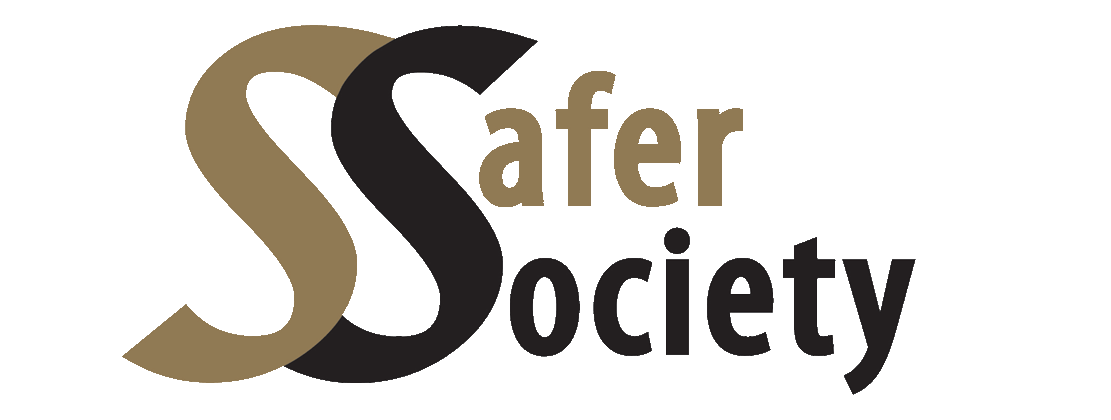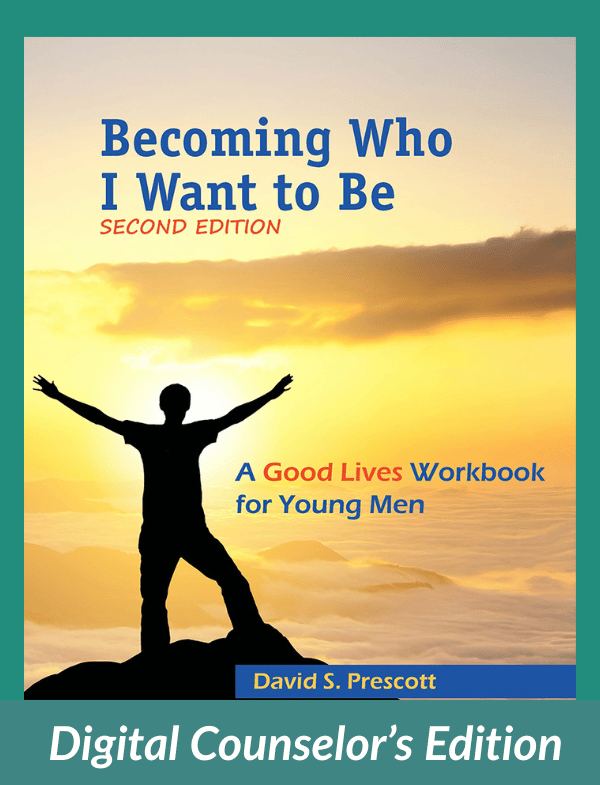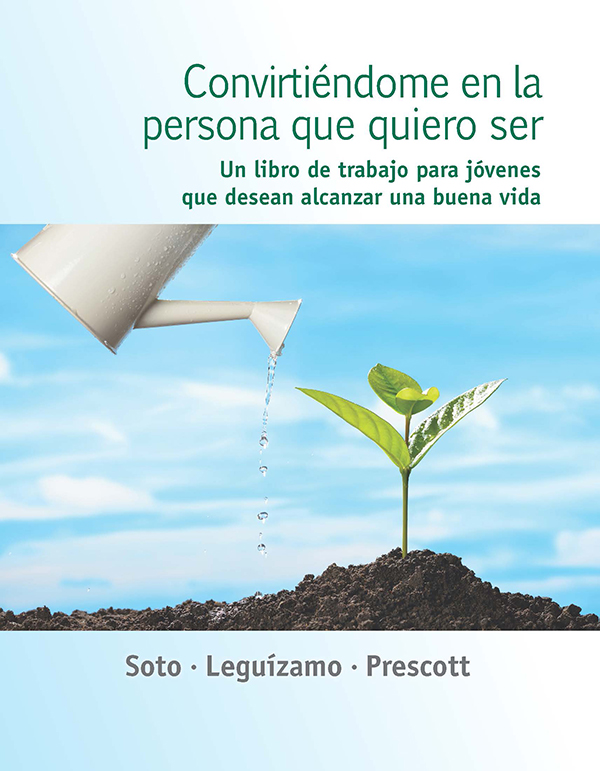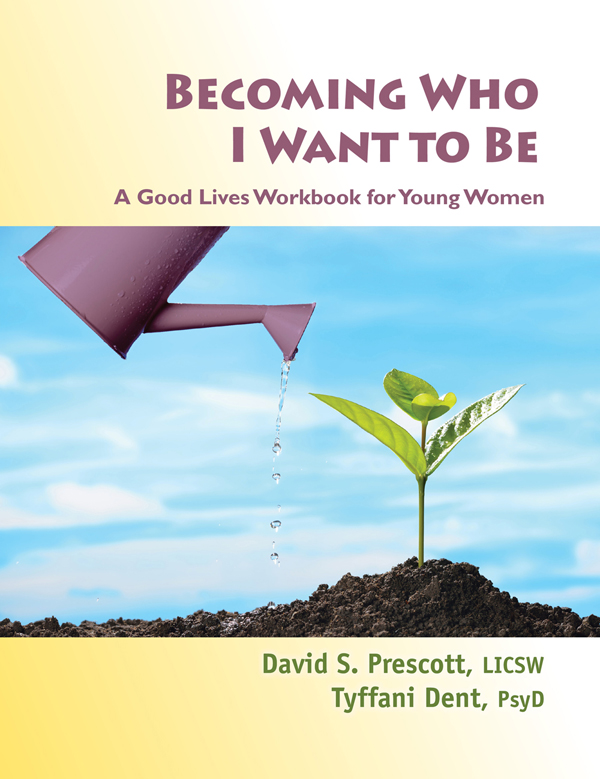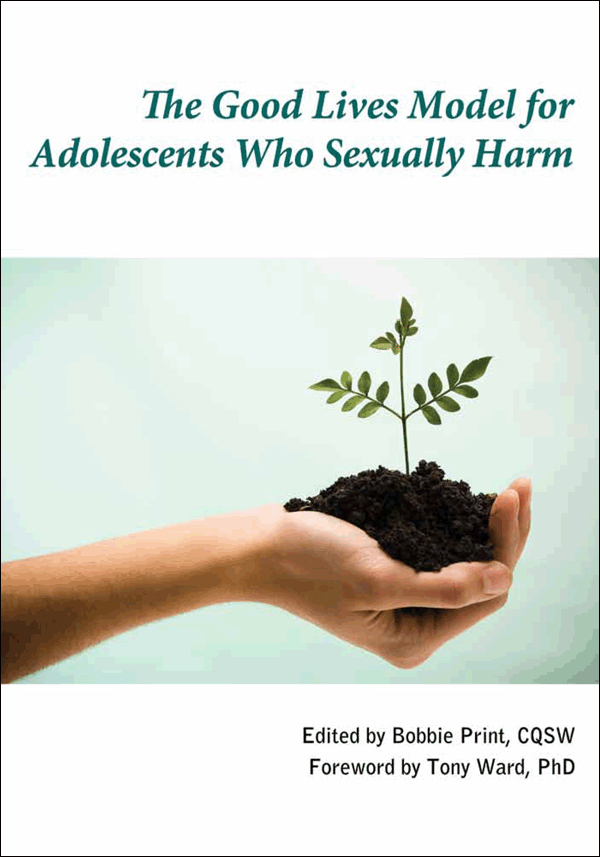Home / Shop / For Youthful Clients / Workbooks for Youthful Clients
Becoming Who I Want to Be: A Good Lives Workbook for Young Men, Second Edition
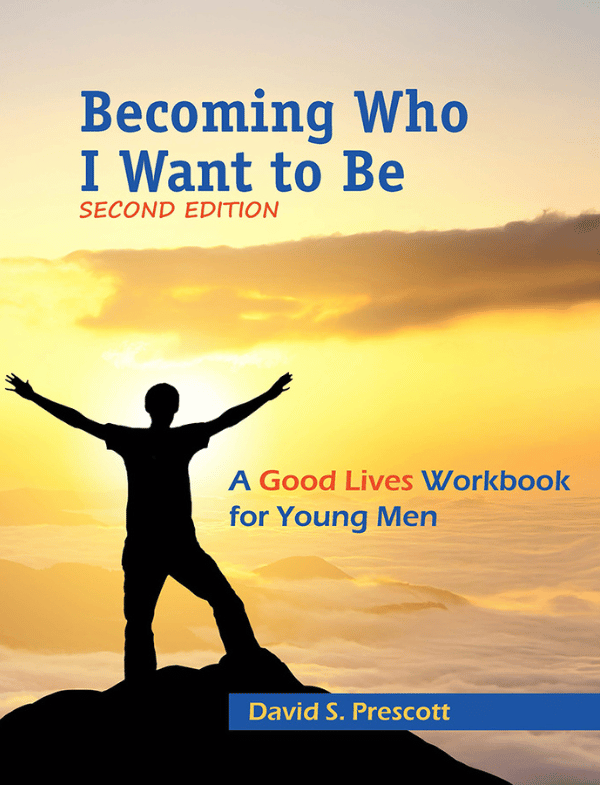
- Description
- Specifications
Becoming Who I Want to Be: A Good Lives Workbook for Young Men, Second Edition
by David S. Prescott, LICSW, ATSA-F
Welcome to a new, expanded edition of the ground-breaking workbook that introduced the Good Lives Model (GLM) for young men struggling with problem behaviors. Designed for clinicians, counselors, and other professionals working with youths, this workbook provides guidance, interactive exercises, and real-world strategies to engage young men who struggle with issues like aggression, problematic sexual behaviors, substance use, or poor decision-making. Whether your clients are dealing with violence, bullying, addiction, or trauma, this workbook helps them identify their personal goals, understand their behaviors, and develop practical plans for a safer, healthier, and more fulfilling future.
The GLM of rehabilitation is an approach that focuses the conversation between professionals and clients not on what is wrong with the clients but rather on building clients’ understanding of what they want their lives to become. The model helps them examine and work toward eight “good life goals.” These goals guide clients toward leading a self-determined, healthier, safer lifestyle.
What Are “Good Life Goals”?
The GLM takes its cue from many humanistic perspectives, all of which posit that all humans have similar goals: we seek to make our lives better. Some of those goals are:
- Having a purpose in life
- Enjoying life, having fun
- Connecting with other people
- Being physically healthy
In the GLM approach, the therapist and client explore how the client is currently pursuing these good life goals. Through these conversations, healthy—and unhealthy—ways of achieving the goals are uncovered. For example, one client might pursue the goal of “connecting with other people” by joining a gang. Instead of unhealthy routes such as this one, therapists and clients explore how this universal desire to connect with others can be achieved in the client’s life in healthy ways—ways that don’t include violence or substance abuse, and don’t lead to incarceration.
What's New
Since publishing the first edition of Becoming Who I Want to Be: A Good Lives Workbook for Young Men, we've developed a greater understanding of how clinicians and their clients use the workbook as well as applying the good lives model. This new edition reflects these new insights.
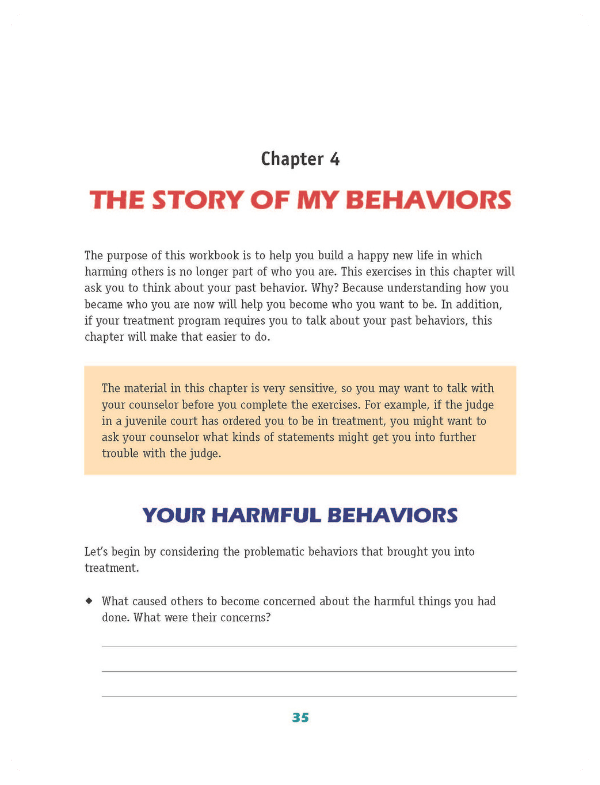
The chapter on The Story of My Behaviors is one of three new chapters.
To be more specific, the second edition is 74 pages longer than the first edition, including 32 removable pages for convenient use by your clients. Here is a rundown of the new material:
- Three entirely new chapters:
- The Story of My Behaviors
- In this new chapter, we explain to clients that some understanding of their past experiences and behaviors can help them move beyond harmful behaviors and develop a lifestyle in which harmful behaviors are undesirable and unnecessary. This chapter seeks to make talking about their personal history easier, and safer, for clients to accomplish.
- My Risk Factors
- In this new chapter, we ask questions that elicit information about the client’s risks of harming others (as well as harming themselves). We also ask them to consider which of their risk factors for harming others have been the primary “drivers” of their harmful behaviors.
- Adversity in My Life: Abuse and Other Traumatic Experiences
- Having examined the client’s history of harmful behavior, we now ask them to consider any adversity they may have experienced, including abuse and other forms of trauma. Understanding the effects of adversity on their lives will help them in their efforts to make positive changes and to form relationships with the people who can help them change.
- The Story of My Behaviors
In the second edition, we continue to offer a separate chapter on each of the eight good life goals, but we have added two new features to each of those chapters:
- A new full-page section in which clients are asked to rate, on a scale of 0 to 10, how important that goal is to them, why they gave it that rating, and how confident they are that they will achieve that goal.
- For clients who are currently living under supervision or in a supervised setting, we have provided a separate space to answer the question, How Am I Trying to Achieve this Goal Now?
The final chapter of the book, Building My Good Life Plan, has been expanded. As in the first edition, we encourage clients to work on all eight goals, explaining that they must work to achieve all the goals if they are to truly have a “good life.” Nevertheless, we know that clients will put a little more time and effort into achieving the goals that are the most important to them, so we made two changes to help with that:
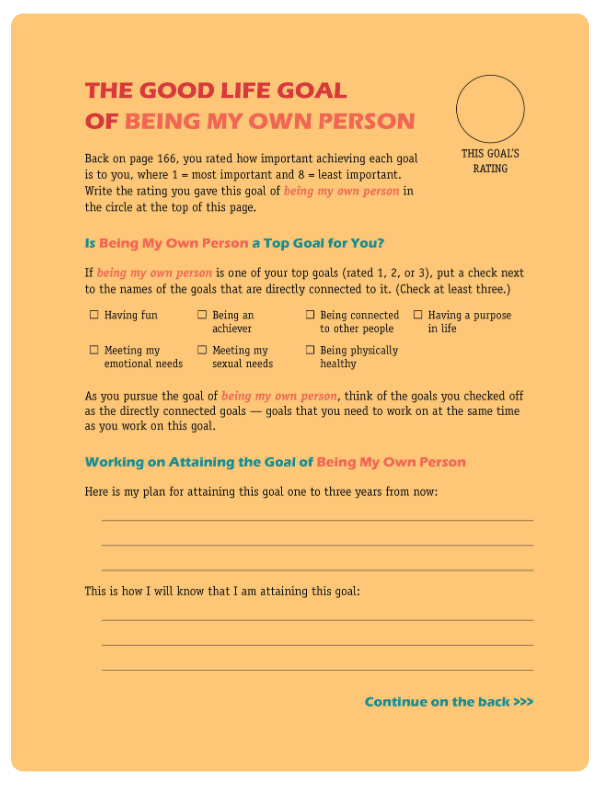
The second edition features 16 pull-out sheets for the client to work with.
- We’ve given clients a way to choose their three “top goals;” then indicate the goals that are connected to their top goals—that is, those goals that must be achieved in order to achieve their top goals.
- We’ve provided more space for each goal and have printed the goals on eight yellow perforated sheets so that clients can remove them from the workbook and sort them in order of importance.
To sum up, our aim was to give Becoming Who I Want to Be, Second Edition, a more comprehensive, and more structured, approach to treatment. Newer practitioners may benefit from the improved structure, while more seasoned practitioners can use the additions as tools for clinical dialogue.
Click here to learn more about the free digital Counselor's Edition!
204 pages, paper
ISBN: 978-1-940234-48-9
Order#: WP253
Price: $34
